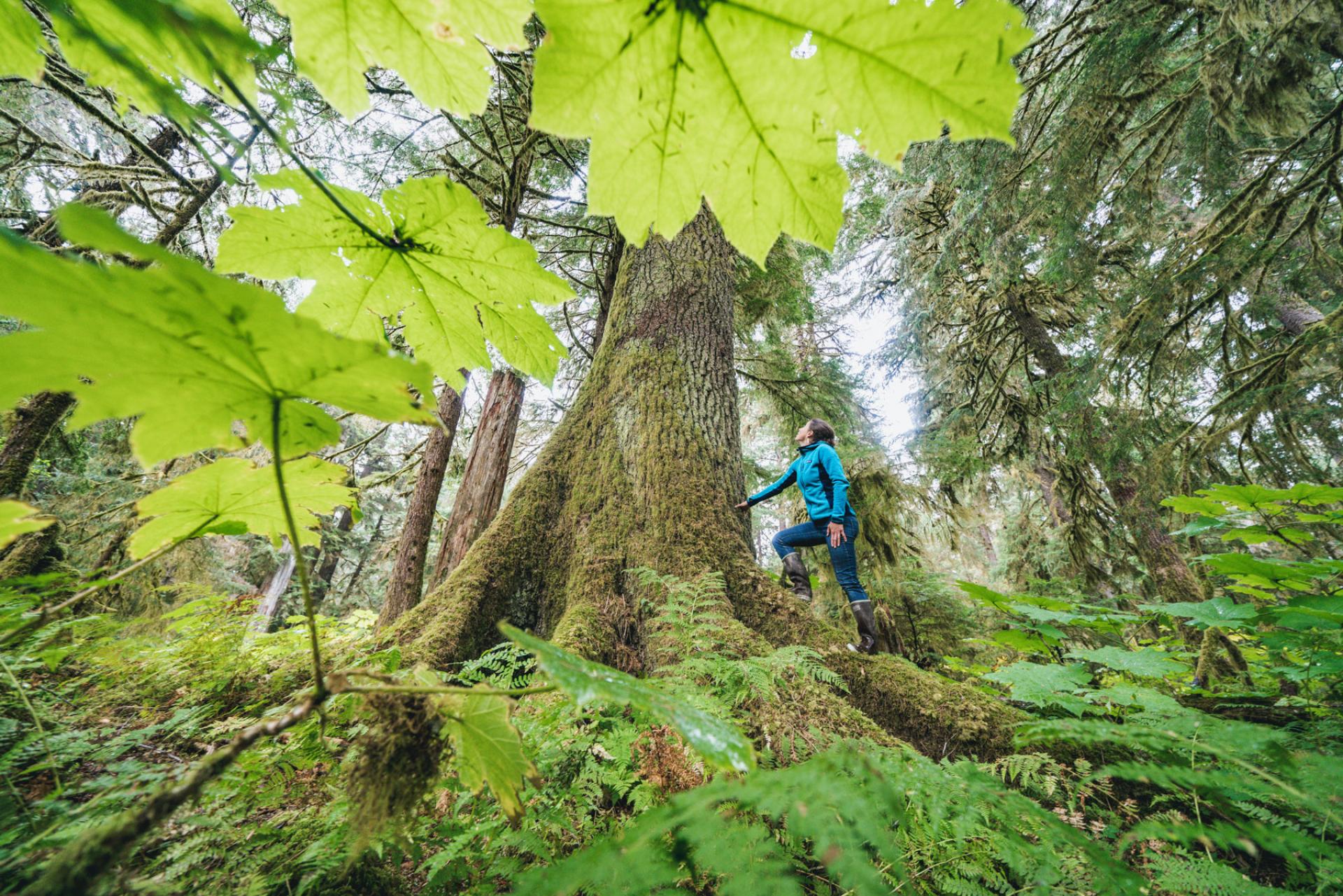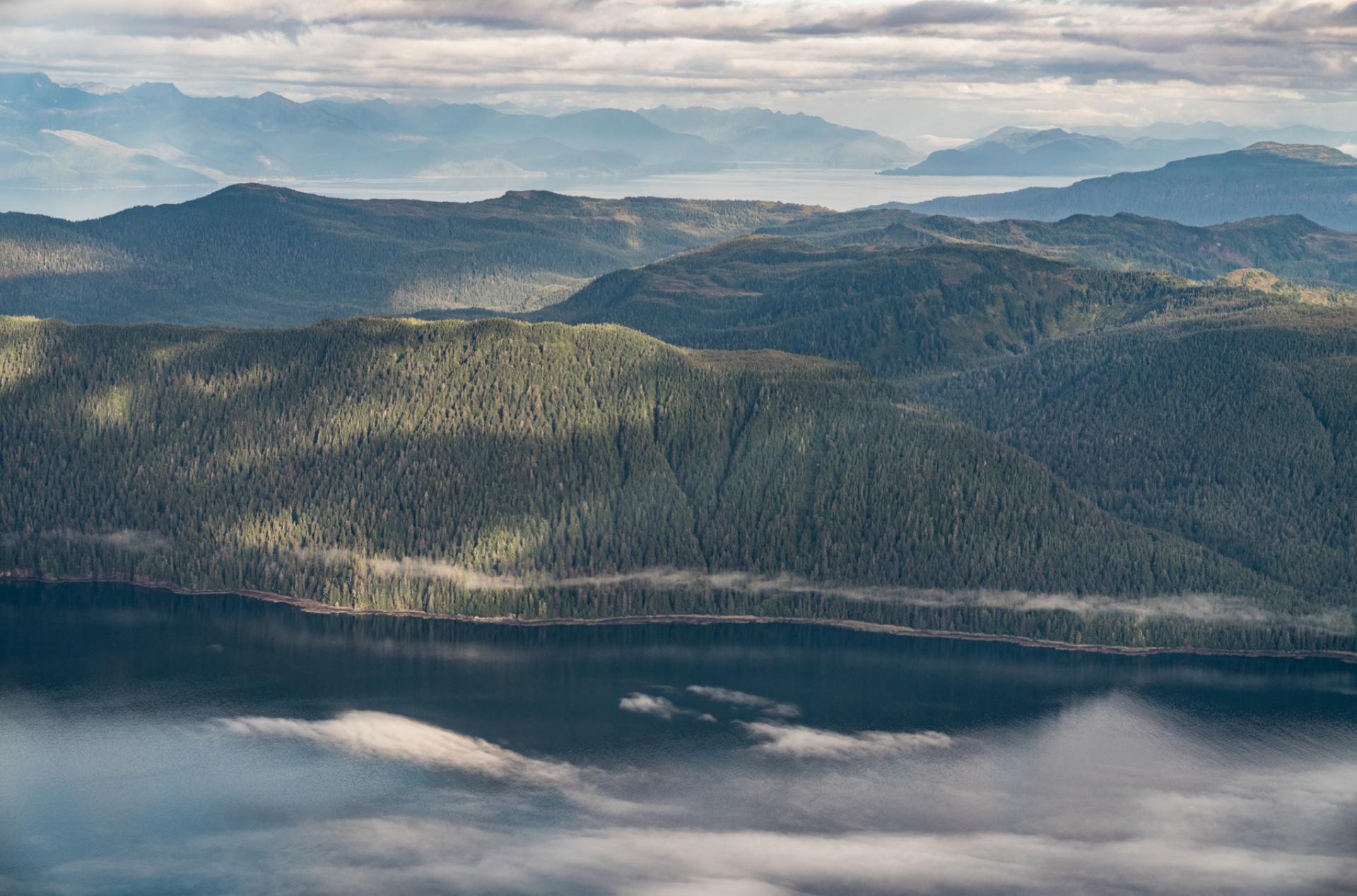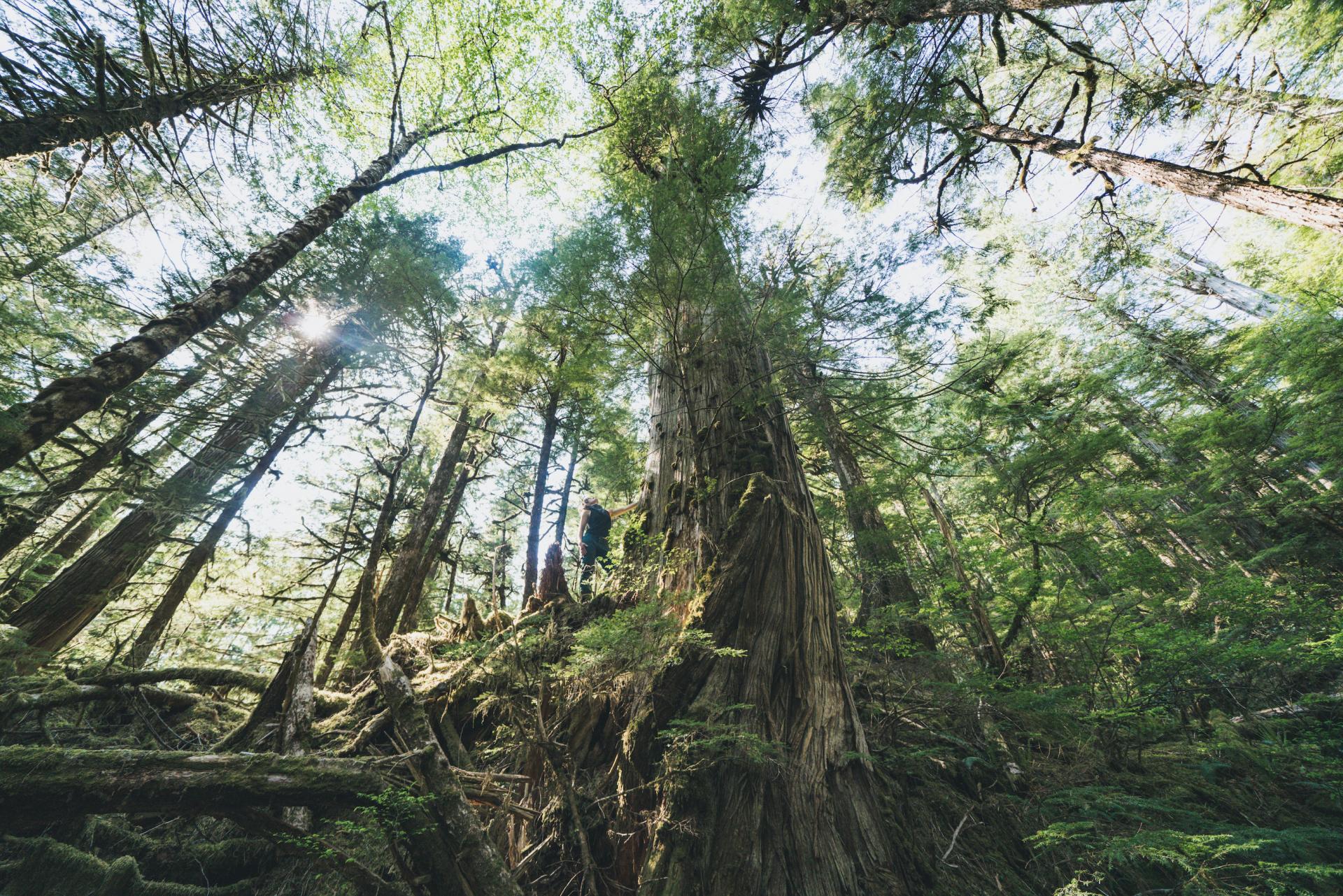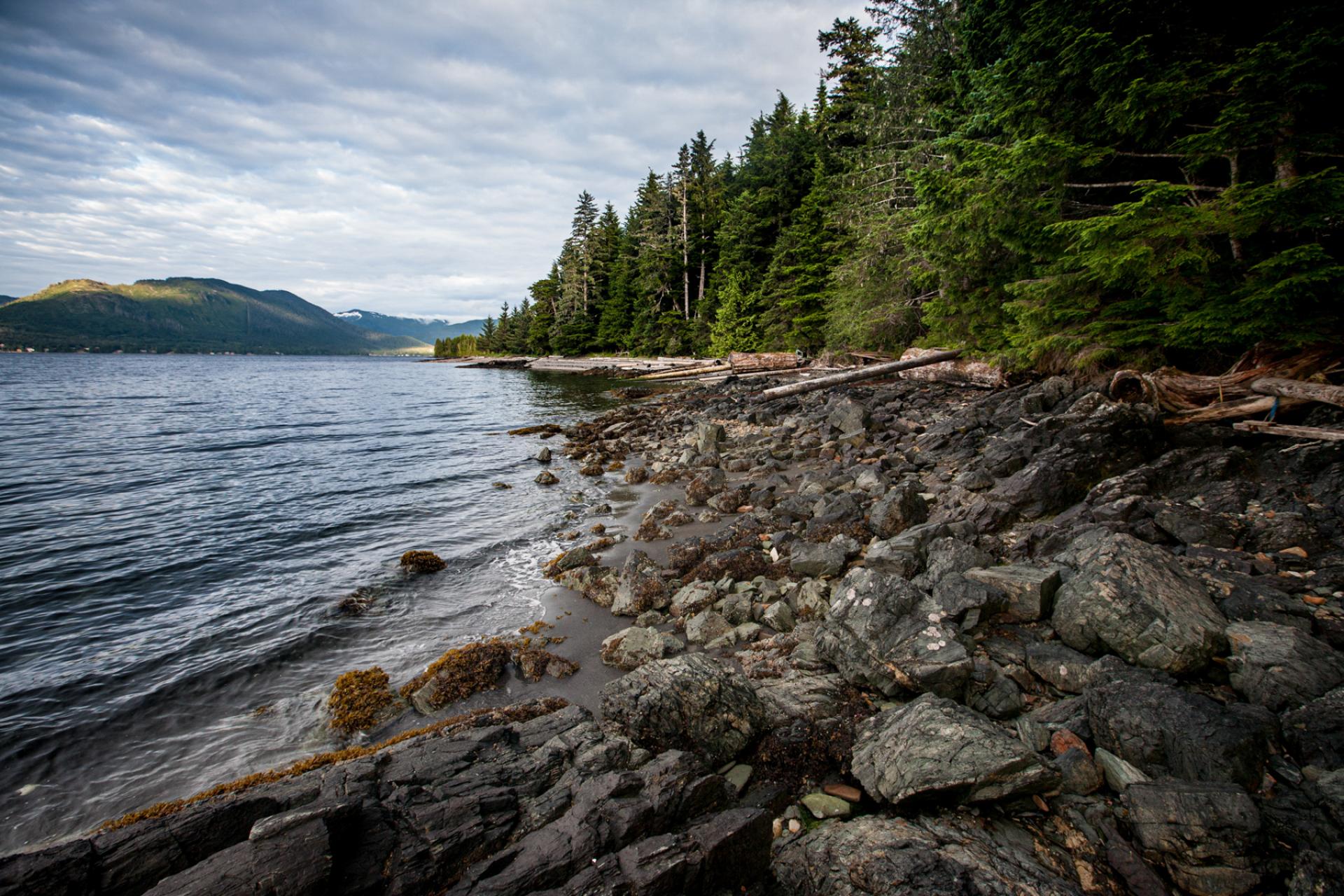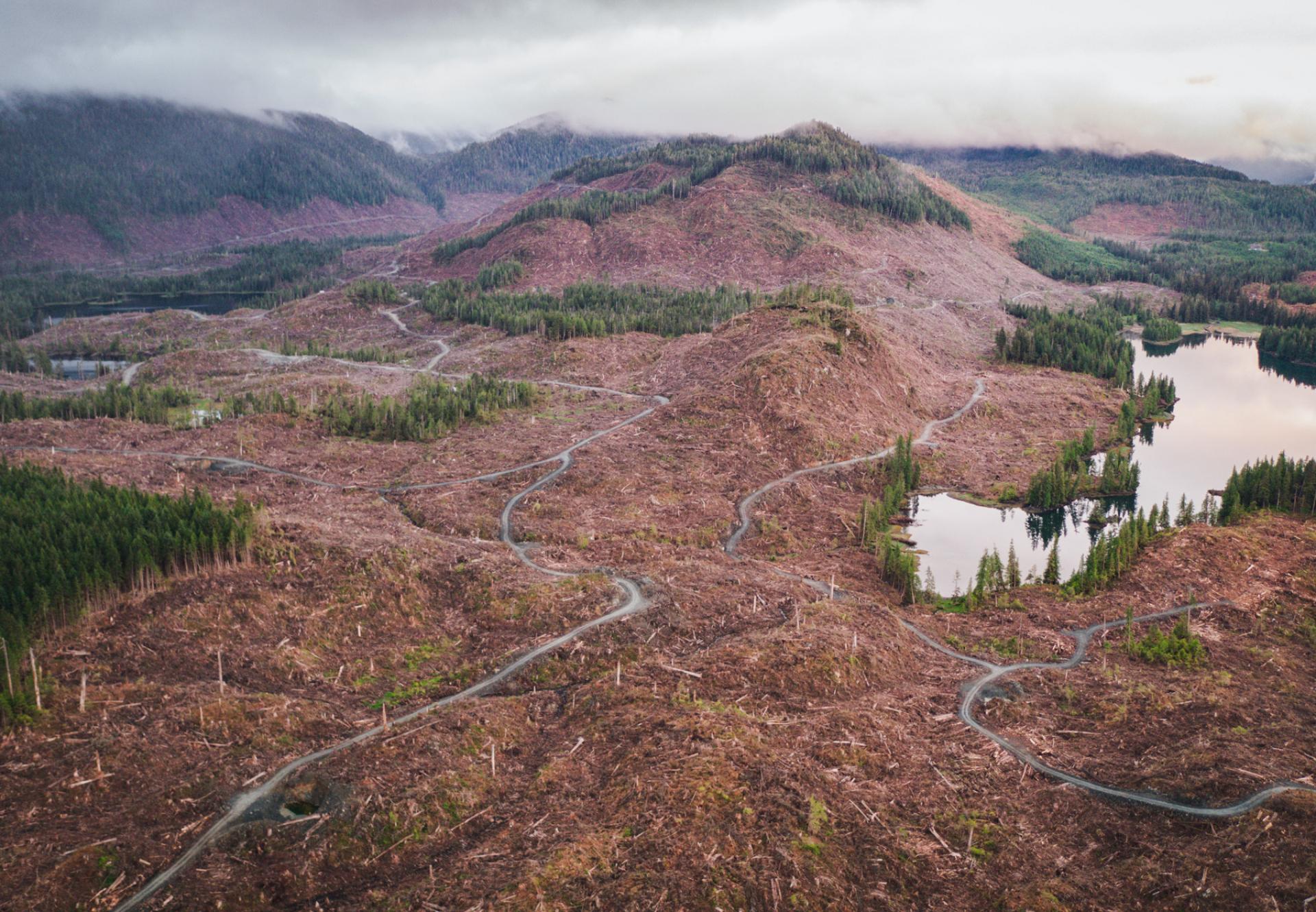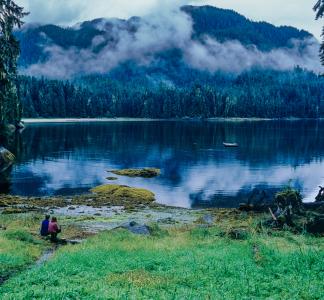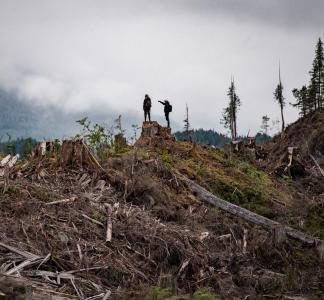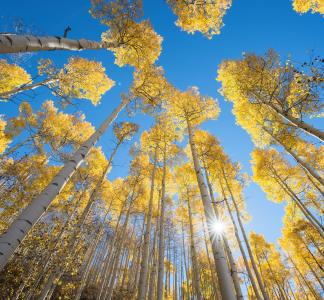Conservation: Tongass National Forest
Nelson Guda
The Tongass National Forest: America’s rainforest
Spanning 16.7 million acres in Southeast Alaska, the Tongass National Forest is the largest national forest in the United States and one of the world's last remaining temperate rainforests. Encompassing nearly 80% of the region, the Tongass is a vast landscape of ancient trees, towering mountains, glacial fjords and more than 19,000 miles of salmon-filled streams.
This thriving ecosystem is home to diverse wildlife, Alaska Native communities and a way of life that has endured for generations. A powerful force in the fight against climate change and one of the most ecologically significant places on Earth.
Why the Tongass matters
A carbon storage powerhouse
The Tongass acts as one of the planet’s most important carbon sinks, storing more carbon per acre than nearly any other forest in the world. Its old-growth trees—some standing for over 800 years—absorb and lock away carbon, helping to mitigate climate change on a global scale.
"America’s salmon forest"
The Tongass' vast 19,000 miles of rivers and streams produce more wild salmon than any other national forest, supporting all five species of Pacific salmon. These fish fuel local fishing economies, sustain Indigenous traditions and provide a crucial food source for wildlife, including bears and bald eagles.
A haven for wildlife
Its diverse ecosystems, from old-growth forests to alpine meadows and glacial fjords, provide a refuge for species found nowhere else. The more than 400 species found in the forest include:
Cultural and economic importance
A way of life for indigenous communities
For thousands of years, the Tongass has been home to the Tlingit, Haida and Tsimshian peoples. The forest supports their traditional ways of life, providing essential resources for subsistence hunting, fishing and gathering.
A hub for tourism and recreation
The Tongass draws visitors from around the world, offering stunning landscapes for hiking, fishing, kayaking and wildlife viewing. Tourism, commercial fishing and recreation are vital economic drivers in Southeast Alaska, supporting thousands of jobs.
Threats and conservation efforts
For decades, industrial clear-cut logging threatened the Tongass' ancient forests, disrupting ecosystems, harming salmon streams and displacing wildlife. In 2023, the Roadless Rule was reinstated, protecting more than 9 million acres from destructive logging and road-building, ensuring the survival of these ancient forests.
Protecting the Tongass means protecting our climate, our wildlife and the cultures and economies that depend on it. Continued conservation efforts are essential to keeping this irreplaceable rainforest intact for generations to come.
